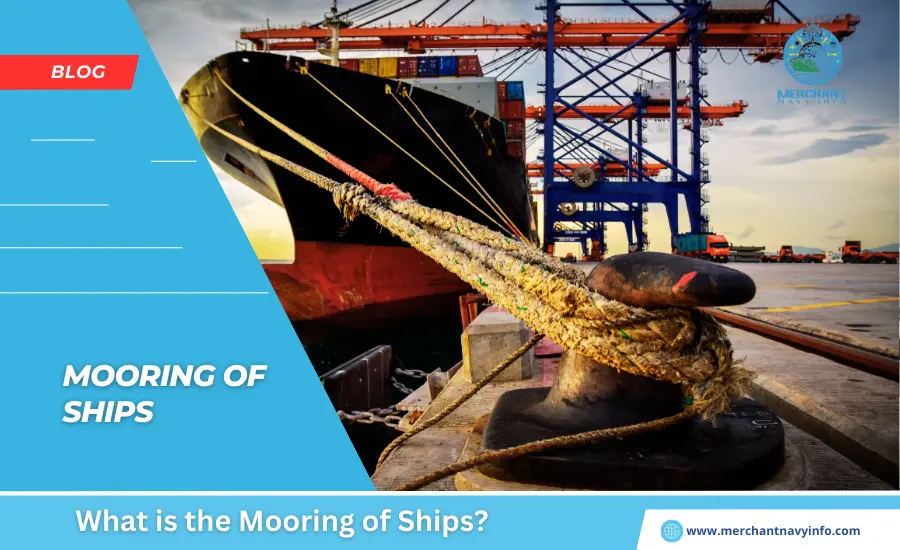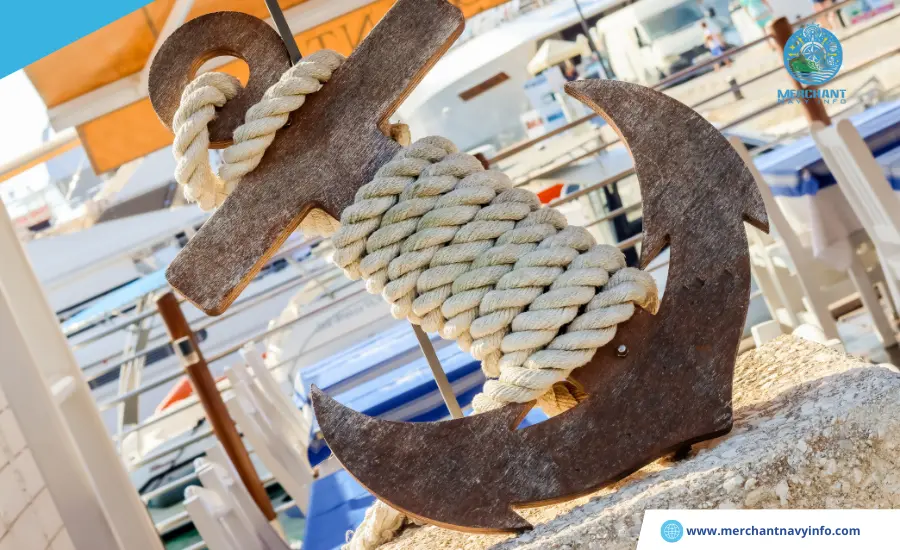
How does a ship “moor” when it arrives at a port, wharf, or pier? Unlike a car, you cannot easily remove the gear or parking brake. To begin with, ships do not have brakes. A vessel must be securely fastened and secured for any kind of shore activities such as B. loading and unloading cargo, bunkering, ballast/DE ballasting, embarking/disembarking, maintenance, repairs, and often with free time depending on travel schedules and availability of berths and labor. Hence, mooring operation or systems to secure the vessel safely for the above purposes are essential for the inspection of ships and marine structures.
Differences Between Mooring, Docking, And Anchoring
The terms mooring, docking, and anchoring can cause confusion and may be used interchangeably. However, there is a significant difference between them. Anchoring is a system that secures a ship at sea when it is away from any fixed structure. In other words, when a ship needs to be moored or run aground in deep waters for various purposes, anchoring is done to prevent the ship from being swept away by hydrodynamic forces present in various forms. Anchors, heavy objects that are as old as ships themselves, have been used for anchoring and mooring operation since ancient times. But, in recent times, on-site Dynamic Positioning Systems (DPS) have been available to ensure the safety of ships anywhere in the sea. These are automated systems that can hold a ship at a specific coordinate without the help of an anchor.
Components Of An Anchor

The basic components of a typical anchor system are:
Anchor Lines
These are the main components of an anchor system. Previously, ropes were mainly used as anchor lines. However, today, steel or high-quality synthetic materials are often used. The main requirements for anchor lines are that they must be high-strength and elastic. The forces transmitted by the ship’s structure are transferred directly to these mooring operation lines. The net effect on the lines is multiplied by this static load combined with random dynamic behavior due to migration tendencies or environmental loads acting on the vessel. Hence, the material and size of these mooring operation lines are carefully selected depending on the type of vessel and mooring operation installation.
Every mooring operation line has a Safe Working Load or SWL, depending on its characteristics. Like all other structures, these mooring operation lines have a certain breaking strength with a safety factor quality. steel hybrids are often used, and synthetic materials are common materials, such as Polyamide and HMPE. Generally, lines with low elasticity or stiffer but stronger are used for larger vessels, while materials with high elasticity or low stiffness are used for smaller vessels. The reason is that heavier vessels have more inertia and are less likely to react to external forces and, therefore, less susceptible to random motion parameters compared to smaller vessels. Therefore, the more flexibility these lines have, the better they can accommodate smaller vessels, which tend to move more when moored. HMPE and steel have low elasticity, and other materials, such as polyamide, have high elasticity.
Mooring Winch
On land, the mooring operation lines are connected to a winch. These winches act as end supports for the lines and assist in handling and adjusting the lines as required. Winch systems control the tension and extension of the mooring lines. Mooring lines are typically electrohydraulically operated, using hydraulics to maintain tension and traction on the lines. The main component of a winch is the cable drum, which can be oriented horizontally or vertically. Again, the size of the drum depends on the rope.
Drive Systems
Electrical and hydraulic mechanisms operate the winches. These are mainly specialized motors that provide energy to the winch through torque. The power supply is provided from the shore power mains. The capacity of these systems is determined by the capacity and an configuration of the winch and associated mooring lines.
Ship’s Fittings Or Fixings
At the other end of the mooring lines, these must be rigidly attached to the ship’s structure. These fittings are usually located on the main deck but may be on subsequent decks. Again, the number, size, type, and configuration of these fittings vary depending on the type of ship. All these mooring fittings are designed and manufactured in accordance with IACS standard guidelines for ships and associated mooring systems. Typically, wedges, bollards, guide cleats, bollards, etc, are used as fittings.
Fenders Despite having mooring lines, ships are often prone to movement and can easily collide with the adjacent shore or with the dock structure to which the ship is connected. Such an impact can damage the embankment structure and the ship. For the same reason, ships and shore structures are packed with safety devices called fenders, which absorb the impact energy in the event of a collision or collision. The design of the fenders varies depending on the type and size of the ship. They are usually made of rubber, wood, or high-quality synthetic polymers.
Performance Of A Mooring System
The main role of a mooring system is to hold the vessel in place when safely docked and also to ensure that the vessel is protected from damage due to collision and ship-structure interaction caused by external dynamic forces. Moreover, the anchorage arrangement must be such that problems never arise during operation in different ports and docks.
Symmetry And Uniformity Of Position Of The Ship
- Maximum resistance to rotational and translational movements of the ship.
- Uniformity of shore connections or winches to keep the tractive forces of the entire mooring arrangement more or less balanced without causing mechanical imbalances both to the ship structure and to the shore.
- Maximum space to accommodate minimum movements of the ship without obstruction, no matter how rigid the arrangement.
- Reliability & Safety,
- Ability to provide round-the-clock care for a single vessel that is long-stranded or for multiple vessels moored in the same array without structural fatigue or failure.
- Performance is maintained in all weather conditions, even when the forces acting on the lines and attachments are very high.
- Excess or replacement stocks are maintained in case of need or in case of partial failure.
Types Of Anchoring (Depending On Configuration)
- Single Point Anchoring
- Multi Point Anchoring
- Standing Anchoring
- Running Anchoring
- Mediterranean Anchoring









